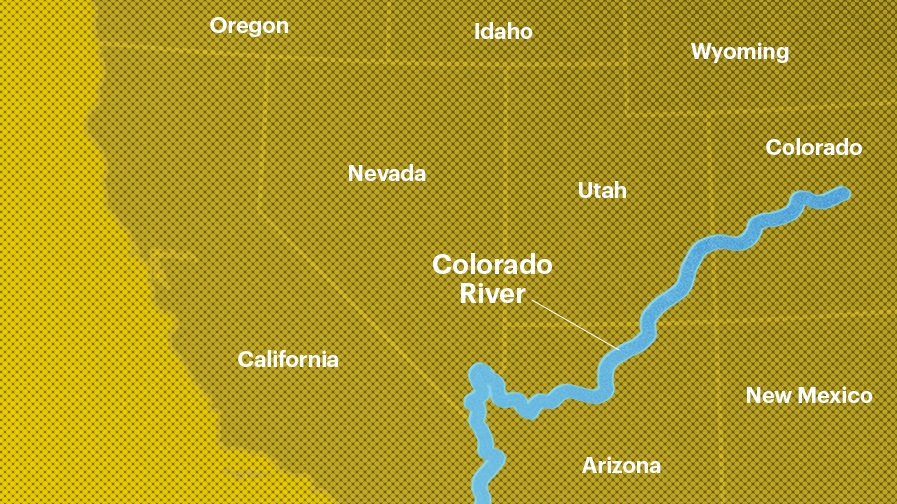The Root of the Colorado River Crisis: Corporate Water Abuse
Published Feb 28, 2023

The shrinking Colorado River has led states to propose drastic water cuts — but these cuts don’t address the root of the issue.
The Colorado River and its tributaries provide water for 40 million people in the river’s basin. But that water is running out.
In 1922, states agreed to allocations of the river’s water in the Colorado River Pact. But in the decades since, climate change has made those allocations unsustainable. In recent years, withdrawals on the River have shot past supply at an average 1.4 billion cubic meters.
Now, as the region’s megadrought worsens conditions, the federal government has stepped in. The Bureau of Reclamation is developing new rules for water use in the Basin in the coming years.
In February, a pair of proposals landed on the Bureau’s desk: one from California, and another from the other six Basin states. But plans like these totally miss the mark, as they focus on limiting statewide water use. Instead, they should target the region’s biggest water abusers: agribusiness and the oil and gas industry.
The Water Problem in the Colorado River Basin
The current megadrought has magnified the Colorado River Basin’s water woes. But the root causes of these problems have gone unaddressed for decades.

For one, the pact and its allocations were decided more than a century before the regions’ currently booming populations. But even back in 1922, officials knew they were allocating more water than the river could provide. The compact assumes annual flows of 16 million acre-feet*, but real flows have been closer to 13.5 million acre feet.
What’s more, the pact ignores the often senior water rights of indigenous communities. Negotiations excluded them from day one, and recent promises to bring them to the table have so far gone unfulfilled.
Native nations hold about a quarter of Colorado River rights. However, they often lack infrastructure that would enable them to realize those rights. In fact, indigenous households are 19 times more likely than white households to lack piped water nationwide.
The current megadrought has further heightened concerns about water security and scarcity. Cities are rationing water and mandating conservation. States are proposing to cut their use by millions of acre-feet.
Meanwhile, across the region, Big Oil and Big Ag continue guzzling water with impunity.
The Colorado River’s Hidden Threat: Unsustainable Corporations
Climate change brings rising temperatures and more unpredictable precipitation, neither of which bode well for the Basin. But climate change isn’t a root cause of the current crisis.
While residents cut back, state governments have allowed corporations to gulp down more water while worsening climate change in the process.
Most of these corporations are big agribusinesses. Eighty percent of the Colorado River goes to agriculture, and 80% of that water goes to growing crops that feed livestock, like water-intensive alfalfa.
This points to another big water user: factory farms. For instance, mega-dairies consume freshwater for thousands of cows, as well as for cleaning and cooling equipment. New Mexico mega-dairies use enough water to fill 15 Olympic-sized swimming pools every day.
Factory farms aren’t just using water; they’re polluting it, too. Mega-dairies routinely spray their waste on fields, where it runs off into waterways, including drinking water sources. That creates a slew of health and environmental problems, including fish kills and cancer linked to nitrate pollution.
The oil and gas industry also uses and pollutes huge amounts of water. From January 2018 to March 2021, it used more than 3 billion gallons of freshwater for drilling in California alone. The Basin is home to other big oil- and gas-producing states, including New Mexico and Colorado.
Oil and gas operations also pollute unknown amounts of groundwater, which is often drawn on for drinking water. In California, every barrel of oil produces an average 19 barrels of wastewater, which companies pump right into the ground.
Corporate Water Abuses Make A Bad Situation Worse
Not only are corporate water abusers guzzling water — they’re worsening the climate crisis. Livestock production causes about 15% of global climate pollution. Drilling dregs up more fossil fuels that warm our planet.
Climate change is making dry periods more common and more intense, further shrinking the Colorado River and other essential water sources.
Additionally, dwindling supply has supercharged the hunt for groundwater in ancient aquifers. Right now, those who have the most money get to drill the deepest to draw on these underground sources.
As a result, big agribusinesses can pay for deeper wells, allowing them to irrigate their fields and make huge profits. Meanwhile, many rural families see their wells run dry and face an uncertain future for water access in their own homes. Aquifers are running worryingly low, and they’ll take thousands of years to naturally replenish.
We Need to Hold Corporate Water Abusers Accountable
Recent snow and rain in the region has done little to relieve the long-term water crisis. While the precipitation brought the River’s reservoirs above predicted water levels, they still stand below historic averages. Water levels will continue to drop over time, thanks to climate change.
The draining of the Colorado River is a national crisis. It threatens the water, sanitation, and food of huge swaths of the country. Yet, the solutions put forward so far fail to address the root causes of this crisis.
Unsustainable, extractive industries are putting this region in jeopardy. Greedy corporations maintain millions of acres of high-value thirsty crops while their neighbors are asked to sacrifice. They’re draining millenia-old aquifers for a quick buck, while some families don’t even have piped water.
Until we hold these corporations accountable, the Colorado River won’t see real relief.
Don’t let corporations get away with water abuses. Spread the word!
* An acre-foot refers to the amount of water it would take to cover an acre of land with water a foot deep. An acre-foot is equal to roughly 326,000 gallons.
Enjoyed this article?
Sign up for updates.
TO TOP


